vue3.0从零开始到实战项目
vue3.0中文官网连接:https://v3.cn.vuejs.org/
一、安装node.js
1. 官方文档:https://nodejs.org/en/
安装版本必须大于12.0,建议直接安装最新稳定版本
2. 安装 node.js 的同时,一般会自动安装 npm 的,所以不用单独安装 npm 了(如有需要,也可以命令行安装:npm install -g)
3. 查看版本命令行:node -v 、 npm -v

二、全局安装vue脚手架
npm install @vue-cli -g
官方文档:https://cli.vuejs.org/zh/guide/
如果你安装的是旧版的vue-cli,需要提前卸载之后再重新安装 @vue-cli,卸载:
npm uninstall vue-cli -g
三、初始化项目
版本查看:vue -V
版本升级:npm update -g @vue-cli
创建项目:vue create projectname
注意:项目名称不能大写有字母
进入项目目录:cd projecname
运行项目:npm run serve
项目目录结构:

1. node_modules 依赖包,如果删除了,可以使用命令:npm install 安装
2. public 存放整个项目默认的 HTML 模板
3. src 源代码目录(入口文件:main.js)
4. .browserslistrc
5. .editorconfig 编辑器的默认配置
6. .eslintrc.js
7. .gitignore
8. babel.config.js 配置 babel
9. package.json
10. package-lock.json
11. README.md
以下是手动选择依赖初始化:
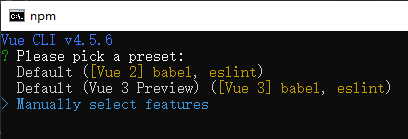
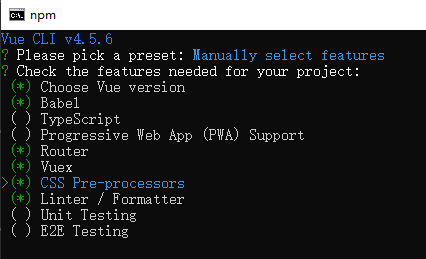







运行项目:
cd projectname
npm run serve

四、vue 3.0 + vite 篇
Vite 是一个 web 开发构建工具,由于其原生 ES 模块导入方法,它允许快速提供代码。
通过在终端中运行以下命令,可以使用 Vite 快速构建 Vue 项目。
$ npm init vite-app <project-name>
$ cd <project-name>
$ npm install
$ npm run dev
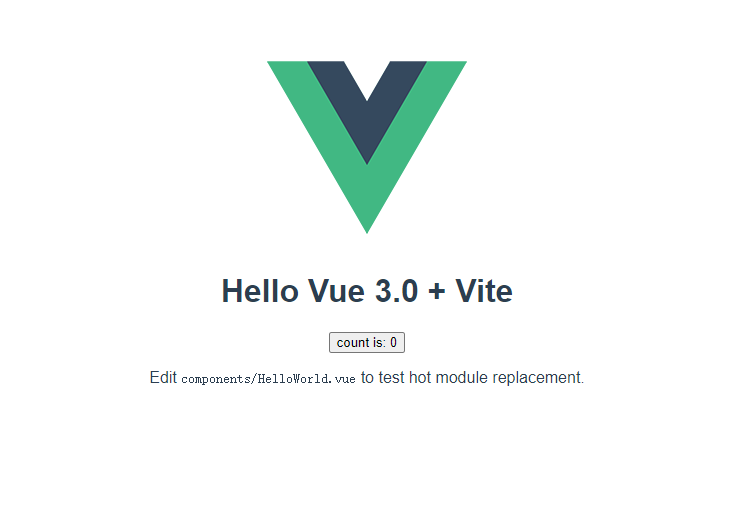
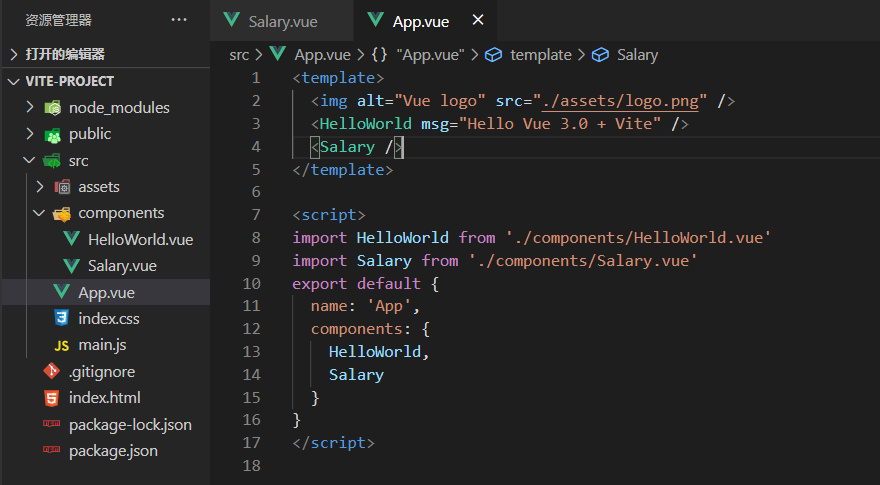
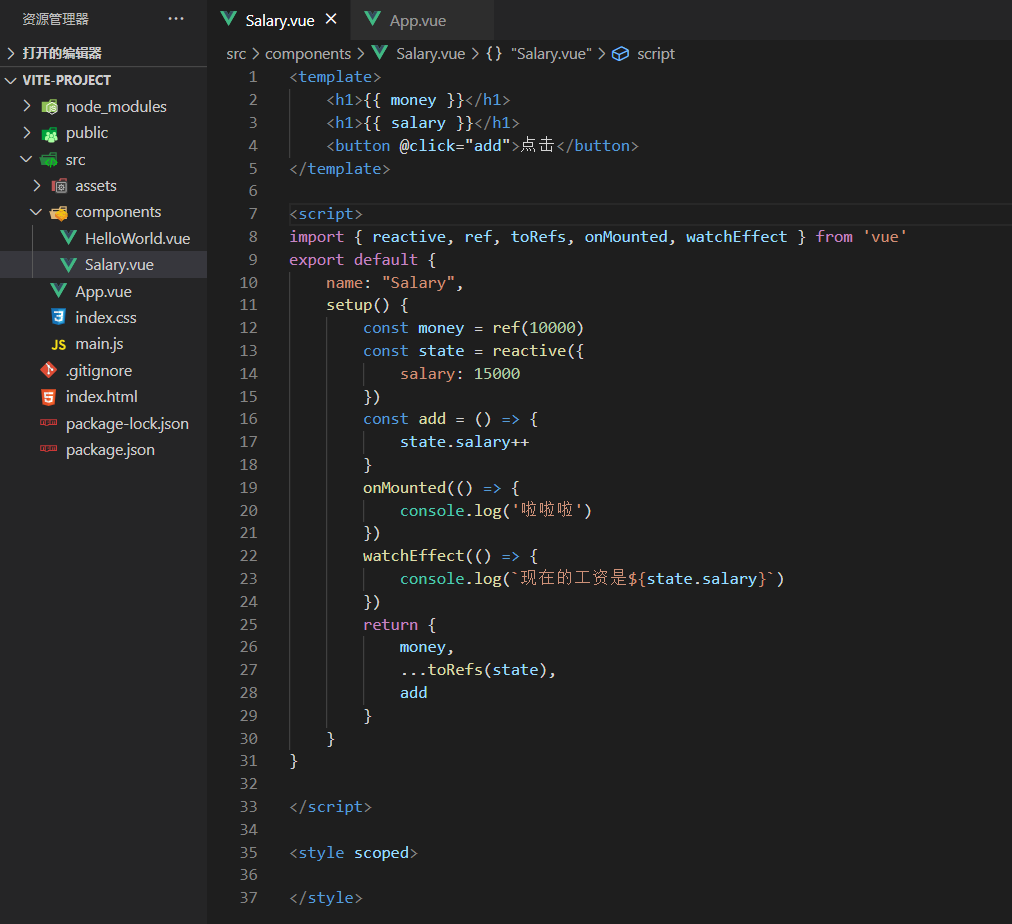
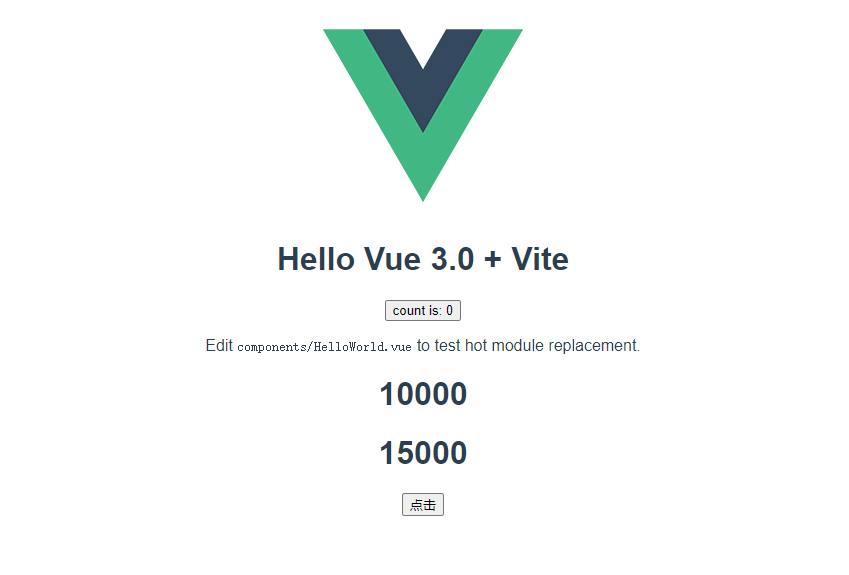
安装项目所需插件,比如:
安装项目生产依赖:npm vie vue-router@next vuex@next element-plus axios -D
安装项目开发依赖:npm i sass -S
element-plus文档:https://element-plus.gitee.io/#/zh-CN
安装路由 Router
# 查看 vue-router 版本
$ npm vie vue-router versions
# 指定版本下载
$ npm i -D vue-router@4.0.0-beta.11

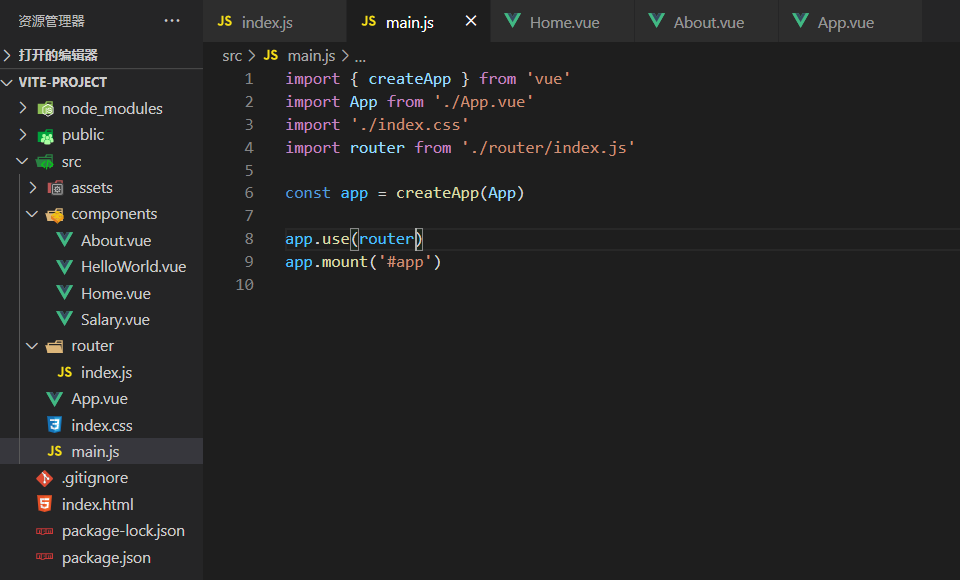
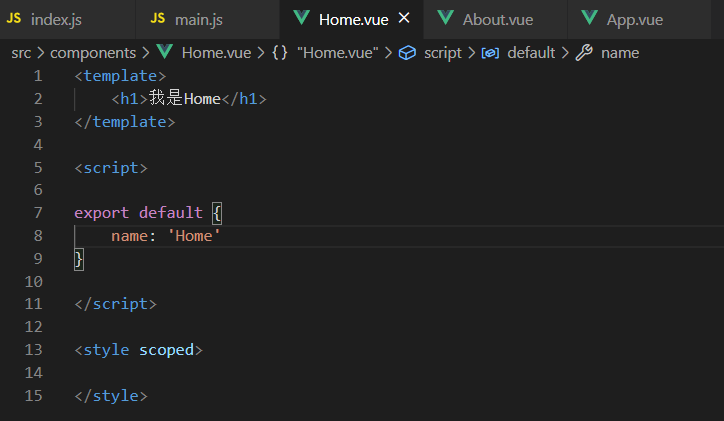
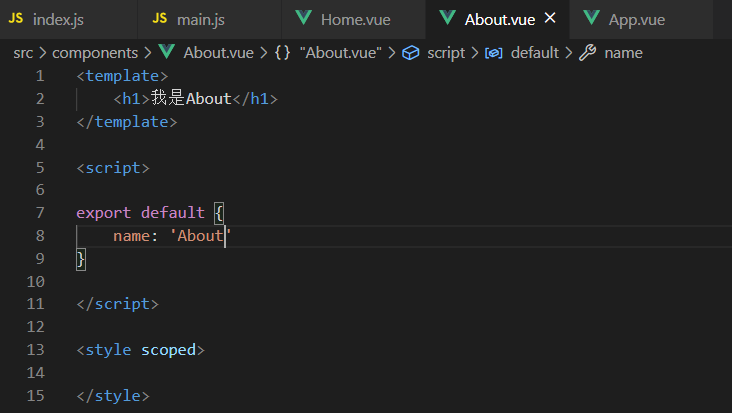
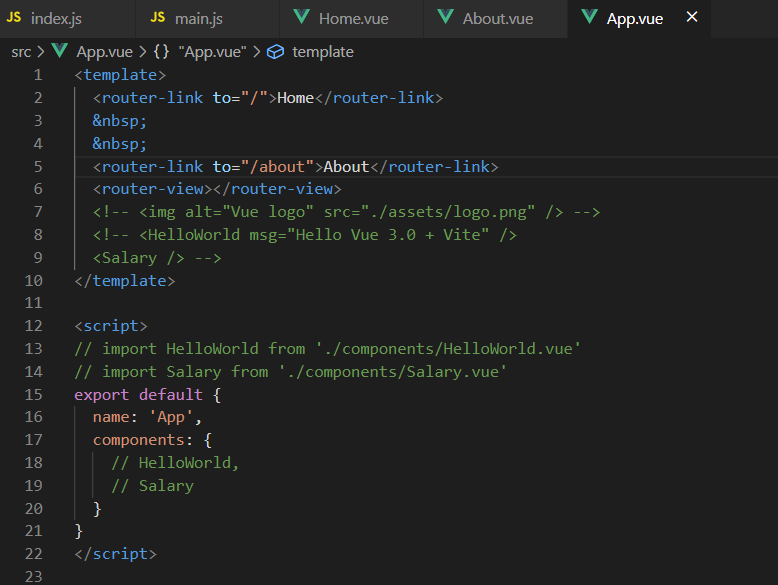

以下是vue3.0的知识点:
Object.defineProperty => Proxy
重构了虚拟DOM
OptionApi => Composition API
setup 是什么?
setup 实际上是一个组件的入口,它运行在组件被实例化的时候,props 属性被定义之后,实际上等价于 vue2.x 版本的 beforeCreate 和 Created 这两个生命周期。
setup 接受两个参数,第一个是 props ,第二个是 context
setup(props, ctx) {
console.log(props, ctx)
}
let Child = {
template: `<div>{{title}}</div>`,
setup(props, context) {
console.log(props)
}
}
let App = {
template: `<div class="container"><Child title="test props"/></div>`,
components: {
Child
}
}
Vue.createApp().mount(App, '#app')
reactive
const { reactive, toRefs } = Vue
let App = {
template: `<div class="container">count: {{count}}<button @click="handlerCountAdd"> Click ++ </button></div>`,
setup() {
const state = reactive({ count: 0 })
const handlerCountAdd = () => {
state.count++
}
return {
...toRefs(state),
handlerCountAdd
}
}
}
Vue.createApp().mount(App, '#app')
toRefs
vue3 提供的 ref 让我们有机会创建单个的响应式的对象,在 setup 函数中 return 出去之后,在模板中可直接访问
const App = {
template: `<div class="container">{{value}}</div>`,
setup() {
const value = ref(1)
return { value }
}
}
Vue.createApp().mount(App, '#app')
const App = {
template: `<div class="container">{{state.value}}</div>`,
setup() {
const state = reactive({ value: 'reactive' })
return { state }
}
}
Vue.createApp().mount(App, '#app')
const App = {
template: `<div class="container">{{value}}</div>`,
setup() {
const state = reactive({ value: 'reactive' })
return toRefs(state)
}
}
Vue.createApp().mount(App, '#app')
反转字符串 demo
let App = {
template: `<div class="container">value: <input v-model="value"/><br/>rvalue: {{rvalue}}</div>`,
setup() {
const state = reactive({
value: '',
rvalue: computed(() => state.value.split('').reverse().join(''))
})
return toRefs(state)
}
}
Vue.createApp().mount(App, '#app')
数据响应式
在 Vue3 中实现数据响应式的方案由 Vue2 中的 Object.defineProperty 换成了 Proxy,关于数据响应式的Api上边说到了一些,还剩下 effect 和 watch 没有提及到,effect 是数据响应式中重要的一部分,watch 和 computed 都是基于 effect 的。
let App = {
template: `<div class="container"> count: {{count}} <button @click="handlerCountAdd"> Click ++ </button></div>`,
setup() {
const state = reactive({ count: 0, value: 1 })
const handlerCountAdd = () => {
state.count++
}
watch(
() => state.count,
val => {
console.log('watch', state.count)
console.log('watch', state.value)
}
)
effect(() => {
console.log('effect', state.count)
console.log('effect', state.value)
})
return { ...toRefs(state), handlerCountAdd }
}
}
Vue.createApp().mount(App, '#app')
effect 在响应式数据变化的时候就会执行,执行次数根据响应式数据的个数来决定
let App = {
template: `<div class="container"><button @click="handlerCountAdd"> Click ++ </button></div>`,
setup() {
const r = ref(1)
const s = ref(1)
const t = ref(1)
const handlerCountAdd = () => {
r.value *= 1
s.value *= 2
t.value *= 3
}
effect(() => {
console.log('effect', [r.value, s.value, t.value])
})
return { handlerCountAdd }
}
}
Vue.createApp().mount(App, '#app')
而 watch 则点击一次 ,只会触发执行一次
let App = {
template: `<div class="container"><button @click="handlerCountAdd"> Click ++ </button></div>`,
setup() {
const state = reactive({ count: 0, value: 1 })
const r = ref(1)
const s = ref(1)
const t = ref(1)
const handlerCountAdd = () => {
r.value *= 1
s.value *= 2
t.value *= 3
}
watch([r, s, t], val => {
console.log('watch', val)
})
return { handlerCountAdd }
}
}
Vue.createApp().mount(App, '#app')
生命周期
beforeCreate => setup(替代)
created => setup(替代)
beforeMount => onBeforeMount
mounted => onMounted
beforeUpdate => onBeforeUpdate
updated => onUpdated
beforeDestroy => onBeforeUnmount
destroyed => onUnmounted
errorCaptured => onErrorCaptured
全局配置
Vue2.x 创建实例并且挂载 DOM 上
import Vue from "vue";
import App from './App.vue'
new Vue({
render: (h) => h(App)
}).$mount("#app");
Vue3.0 新增 api ===> createApp 创建实例
createApp 会产生一个 app 实例,该实例拥有全局的可配置上下文
import { createApp } from 'vue'
import App from './App.vue'
createApp(App).mount('#app')
vue 函数
createApp
const app = createApp(App)
app.use(store)
app.use(router)
app.mount('#app')
传了两个属性
v-model:selectKeys = "selectKeys"
import {reactive,toRef } from 'vue
export default{
setup(props,ctx){
//默认执行一次
//页面使用 state.selectKeys
const state = reactive({ //attr slots emit
selectKeys:0
})
//1.直接使用
return {
selectKeys:state.selectKeys
}
//2.导出,页面上直接使用,数据响应式还带解构
return {
...toRefs(state)
}
onMounted(()=>{
})
}
}
监听路由变化
import {reactive,toRef,watch } from 'vue
import {useRoute} from 'vue-router'
export default{
setup(props,ctx){
const state = reactive({ //attr slots emit
selectKeys:0
})
//1.watch监控路由变化
watch(()=>route.path,(newValue)=>{
state.selectKeys = [newValue]
})
//2.computed监控路由变化
const selectKeys = computed(()=>{
return [route.path]
})
return {
selectKeys
}
}
}
vuex
import {reactive,toRef,watch ,computed} from 'vue'
import {useRoute} from 'vue-router'
export default{
setup(props,ctx){
const route = userRoute()
const store = useStore()
const state = reactive({ //attr slots emit
selectKeys:0
})
//1.watch监控路由变化
watch(()=>route.path,(newValue)=>{
state.selectKeys = [newValue]
})
//2.computed监控路由变化
const selectKeys = computed(()=>{
return [route.path]
})
//ref 把普通值变成包装后的结构,将属性变成响应式
// ref(store.getters.allTime)
return {
selectKeys,
allTime:ref(store.getters.allTime)
}
}
}
//store.js
import {createStore} from 'vuex
export default {
state:{
},
getters:{
allTime:()=>{
return 0
}
},
mutations:{
},
actions:{
},
modules:{
}
}
组件通信
import {reactive,toRef,watch ,computed} from 'vue'
import {useRoute} from 'vue-router'
import moment from 'moment'
export default{
setup(props,ctx){
const state = reactive({
form:{
date:moment(Date.now()).format('YYYY-MM-DD')
}
})
//方法函数
const onSubmit =()=>{
//传给父组件
this.$emit('handlePlan',state.form)
}
return {
...toRefs(state),
onSubmit
}
}
}
//父组件
<Child @handlePlan="handlePlan" />
import {reactive,toRef,watch ,computed} from 'vue'
import {useRoute} from 'vue-router'
import moment from 'moment'
export default{
setup(props,ctx){
const state = reactive({
form:{
date:moment(Date.now()).format('YYYY-MM-DD')
}
})
const handlePlan = (plan)=>{
console.log(plan)
}
return {
handlePlan
}
}
}
封装 API
// 环境变量
VUE_APP_URL = 'http://www.xxx.com:3000'
import axios from 'axios
const instance = axios.create({
baseURL:process.env.VUE_APP_URL,
timeout:3000
})
instance.interceptors.request.use((config)=>{
return config
})
instance.interceptors.response.use((res)=>{
return res.data.data
},err=>{
return Promise.reject(err)
})
export function request(opts){
return instance(opts)
}
//request.js
import {request } from '../utils/axios'
export function getPlanList(){
return request({url:'/plan',method:'get'})
}
export function addPlan(data){
return request({url:'/plan',method:'post',data})
}
export function deletePlan(){
return request({url:'/plan',method:'delete',params:{id}})
}
//action_type.js
export const SET_PLAN_LIST = 'SET_PLAN_LIST'
export const ADD_PLAN = 'ADD_PLAN'
export const DELETE_PLAN = 'DELETE_PLAN'
//store.js
import {createStore} from 'vuex'
export * as types from './action_type'
import * as api from './request'
export default {
state:{
},
getters:{
allTime:()=>{
return 0
}
},
mutations:{
[type.ADD_PLAN](state,payload){
state.planList = [...state.planList,payload]
},
[type.DELETE_PLAN](state,payload){
state.planList.filter(item=>{
return item._id !=payload._id
})
},
[type.SET_PLAN_LIST](state,payload){
},
},
actions:{
//restful api根据不同方法返回不同的资源
async [type.ADD_PLAN]({commit},payload){
let plan = await api.addPlan(payload)
commit(type.ADD_PLAN,plan)
},
async [type.DELETE_PLAN]({commit},payload){
let plan = await api.deletePlan(payload)
commit(type.DELETE_PLAN,plan)
},
async [type.SET_PLAN_LIST]({commit},payload){
let plan = await api.getPlanList(payload)
commit(type.SET_PLAN_LIST,plan)
},
},
modules:{
}
}
使用数据
import {reactive,toRef,watch ,onMounted,onUpdated,compile,computed} from 'vue'
import {useStore} from 'vuex'
import moment from 'moment'
import * as types from '@/store/action_types'
export default{
setup(props,ctx){
const store = useStore()
// const state = reactive({
// planList:store.state.planList //这样取的是默认值
// })
onMounted(()){
store.dispatch(types.SET_PLAN_LIST)
}
//时间格式化方法
const formatDate = (value)=>{
return moment(value).format('YYYY-MM-DD')
}
return {
...toRefs(state.store),
formatDate
}
}
}
简版 vue
//1.创建虚拟节点,将虚拟节点转化为真实节点
//2.组件的实现 setup
//3.reactive api实现effect
//4.diff算法
//5.vite
let { render} = Vue
const state = {
count:0
}
const vnode = {
tag:'div',
props:{color:'red'},
children:[
{
tag:'p',
props:{color:'blue},
children:[
'vue@3-计数器'
]
},
{
tag:'p',
props:{
onClick:()=>{
alert(state.count)
}
}
children:[
'vue@3-计数器'
]
}
]
}
render(vnode,app)
export function render(vnode,container){
// 渲染页面的方法叫patch
//1.第一次渲染 2.dom-diff
patch(null,vnode,container)
}
/**
* n1 老的虚拟节点
* n2 新的虚拟节点
* container 容器
*/
function patch(n1,n2,container){
//组件的虚拟节点是一个对象,tag是一个对象
//如果是组件,tag可能是个对象
//后续diff可以执行这个方法
if(typeof n2.tag ==='string'){
//标签
mountElement(n2,container)
}else if(typeof n2.tag==='object'){
}
}
function mountElement(vnode,container){
const { tag,children,props } = vnode
//虚拟节点和真实节点做映射关系
let el = (vnode.el = nodeOps.createElement(tag))
if(Array.isArray(children)){
mountChild(children,el)
}else{
nodeOps.hostSetElementText(el,children)
}
container.insert(el,container)
}
function mountChild(children,container){
for(var i=0;i<children.length;i++){
let child = children[i]
patch(null,child,container)
}
}
//节点操作方法
exoprt const nodeOps = {
//插入元素节点
insert(child,parent,anchor){
if(anchor){
parent.insertBefore(child,anchor)
}else{
parent.appendChild(child)
}
},
//移除节点
remove(child){
const parent = child.parentNode;
parent && parent.removeChild(child)
},
//创建节点
createElement(tag){
return document.createElement(tag)
},
//设置文本内容
hostSetElementText(el,text){
el.textContent = text
}
}
未完待续。。。